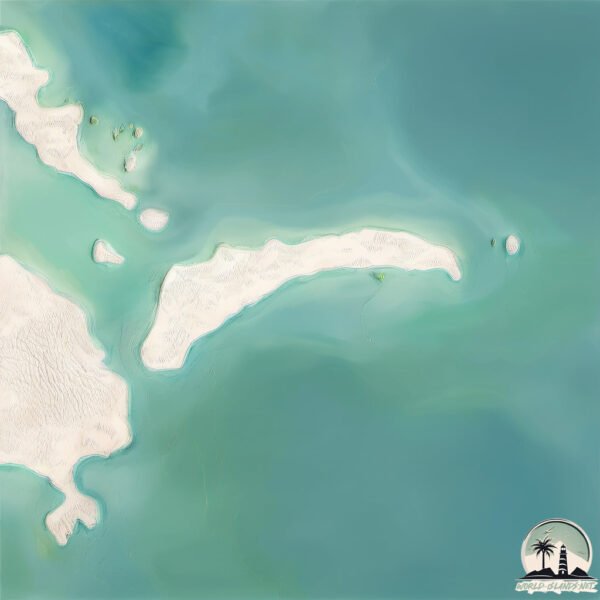Gremdi

Welcome to Gremdi, a Dry island in the Mediterranean Sea – Eastern Basin, part of the majestic Atlantic Ocean. This guide offers a comprehensive overview of what makes Gremdi unique – from its geography and climate to its population, infrastructure, and beyond. Dive into the details:
- Geography and Size: Explore the island’s size and location.
- Climate and Weather: Weather patterns and temperature.
- Topography and Nature: Uncover the natural wonders of the island.
- Infrastructure and Travelling: Insights on reaching, staying, and making the most of your visit.
- News and Headlines: Latest News.
Geography and size of Gremdi
Size: 1.916 km²
Coastline: 9 km
Ocean: Atlantic Ocean
Sea: Mediterranean Sea – Eastern Basin
Continent: Africa
Gremdi is a Small Island spanning 1.9 km² with a coastline of 9 km.
Archipel: –
Tectonic Plate: Aegean Sea – Located in the eastern Mediterranean, this microplate is characterized by seismic and volcanic activity due to its interaction with the Eurasian and African Plates.
The geographic heart of the island is pinpointed at these coordinates:
Latitude: 34.75424382 / Longitude: 11.32147634
Climate and weather of Gremdi
Climate Zone: Dry
Climate Details: Hot Semi-Arid (Steppe) Climate
Temperature: Hot
Climate Characteristics: Features hot summers and mild to warm winters. Receives more rainfall than hot deserts but less than tropical savannas, leading to a somewhat more varied landscape.
Topography and nature of Gremdi
Timezone: UTC+01:00
Timezone places: Europe/Paris
Max. Elevation: 1 m
Mean Elevation: 0 m
Vegetation: Sparse Vegetation
Tree Coverage: 4%
The mean elevation is 0 m. The highest elevation on the island reaches approximately 1 meters above sea level. The island is characterized by Plains: Flat, low-lying lands characterized by a maximum elevation of up to 200 meters. On islands, plains are typically coastal lowlands or central flat areas.
Dominating Vegetation: Sparse Vegetation
These regions have limited plant growth, typically due to extreme conditions like aridity or poor soils. Vegetation is scattered and consists of hardy plant species. Gremdi has a tree cover of 4 %.
Vegetation: 4 vegetation zones – Diverse Island
Four distinct vegetation zones mark these islands as ecologically diverse. They might feature varied landscapes such as forests, beaches, grasslands, and rocky areas. Such diversity reflects the island’s complex ecological interactions and varied habitats, which can support a rich array of wildlife and plant species.
Infrastructure and Travelling to Gremdi
Does the island have a public airport? no.
There is no public and scheduled airport on Gremdi. The nearest airport is Sfax Thyna International Airport, located 68 km away.
Does the island have a major port? no.
There are no major ports on Gremdi. The closest major port is ASHTART OIL TERMINAL, approximately 52 km away.
The mean population of Gremdi is 103 per km². Gremdi is Moderately Inhabited. The island belongs to Tunisia.
Continuing your journey, Sharqi is the next notable island, situated merely km away.
Tunisia's Kerkennah Islands (îles Kerkennah, Sfax) - hidden island paradise with Bradt Travel Guides



Tunisia is classified as Developing region: Regions characterized by lower income levels, with economies in the process of industrialization and modernization. The level of income is Upper middle income.
News – Latest Updates and Headlines from Gremdi
Stay informed with the most recent news and important headlines from Gremdi. Here’s a roundup of the latest developments.
Please note: The data used here has been primarily extracted from satellite readings. Deviations from exact values may occur, particularly regarding the height of elevations and population density. Land area and coastline measurements refer to average values at mean high tide.
